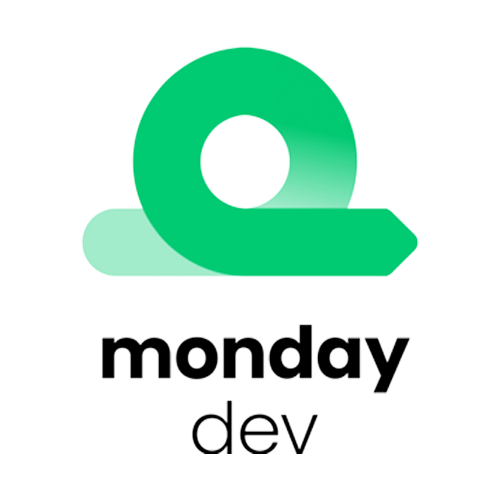

BugHerd Pricing Overview
BugHerd Pricing Reviews
The ease of use from installing it on the site to the smart and intuitive UI to capture your feedback. I also love how it captures your browser, OS, etc and has the ability to provide screen grabs.
I feel sometimes it slows down the site speed. Maybe the JS is a little heavy? Not really sure.
Saving time consolidating and organizing feedback. Easy for testers to see each others' feedback. Also provides a streamlined way to assign feedback to devs for bug fixes and update
Bugherd is a browser plugin that lets you redline your website. Suggest edits, comments and user feedback and have information like the users Browser, URL visited, a screenshot and contact information of who reported the bug. INVALUABLE for development and marketing departments technical and non technical stakeholders as a time saver. Streamlines communication. Directors to copywriters at my place of business love it.
Bugherd is an amazing tool. I wish that it had a better method to integrate into third party project management systems. Bugherd has an API - and you can achieve lots of customization and integration, but honestly it feels like bugherd should be an add on for every project management tool that could be used to run web development. The Zapier Zaps are good enough for many scenarios, but don't always fit the bill with every other project management system.
Multi stakeholder QA on multiple web products. It assists with our product launch and marketing initiatives as well making them "more perfect".
I've been on the development end of about 50 projects in BugHerd, each one a different website I've made. That amounts to around 3000 bugs. BugHerd makes it easy for outsiders and non-technical audiences to leave feedback and compiles these issues in an easy-to-read kanban, isolating each bug and providing helpful information and making it easier for my team and others to review my work. Integration and setup is simple; BugHerd runs via frontend script, or as a browser extension.
I have minor issues and dislikes with BugHerd. The jumps in pricing tiers are somewhat expensive. Sometimes the BugHerd initialization script wouldn't show for some users; I helped troubleshoot by having them clear their browser data. My biggest complaint is the most fixable and interface-based. The timing of bugs is listed as "x time ago" rather than providing an exact time. I know this is a trend for fast comprehension, but as someone who's also looking at a bunch of other quantitative data anyway, a precise time of occurrence is much more useful to me.
BugHerd has been instrumental in supporting my QA process. My work would be slower to ship and less polished, and team communication would be a lot less concise if my team instead passed hundreds of emails and documents per project to spot these issues.
User friendly. Minimal learning curve. Practical and time-saving!
Not much. Can't think of anything I dislike about it.
It's putting feedback right in context. It saves us from screen grabs and emails and allows us to keep the feedback/notes organized and controlled.
BugHerd completely changed our project feedback loop with our customers and internal project stakeholders. The system provides a painless experience for our clients to deliver feedback on Website projects - not just bugs, but also for noting content changes (text and imagery) and functionality requests. It's simple enough for non-technical users, and advanced enough to be useful to our developers, content managers, and designers. It also provides us with detailed browser/viewport/OS information that our customers wouldn't otherwise provide to us without request.
The one disadvantage is the lack of a two-way integration with JIRA. This is minor, however. Any issues we've had, in terms of usability and functionality, have been promptly addressed by the BugHerd team.
BugHerd has eliminated long chains of feedback emails between our team and customers. This has enabled us to build out websites more quickly and simultaneously increased our quality. Previously, we would send a developed website to our customer and solicit their feedback. We would typically receive dozens of emails or Word documents, all formatted differently, with lists of changes. These included tweaks to text content, imagery, functionality problems, and new functionality requests. BugHerd, on average, saves about a week of time in our post-production stages. Our customers even find it so user friendly that they adopt the product for internal feedback.
Simple implementation and very easy to add clients too. The ability to tag specfic components for visual feedback makes the process very seamless. It fully integrates with the native kanban board to track bugs and improvements.
Sometimes when using javascript heavy websites, the Chrome extension can cause some odd behaviour and console errors. This is not too wide spread but has limited us in some areas.
BugHerd removes the need for large documents of feedback and provides a large depth of feedback that we'd expect from an in person feedback session. It also allows for anyone to feedback at any time and capture it all in the standardised way.
How easy it is to collate feedback and bug reports on staging websites. Our clients love to be able to see the progress of their feedback and it's great that it's in real time.
Personally, I think the UI could do with an update but that is so minor when you realise its functionality is so amazing!
Using Bugherd means I don't have hundreds of emails from multiple sources about the same project which is a nightmare and things can get lost. Bugherd keeps everything in one place and allows highly specific feedback with so much information available like screen size, OS, Browser, screenshots and now even video capture etc! We have been complimented by clients for using Bugherd as it just makes pre-live/staging feedback sprints so much easier.
BugHerd's greatest feature is its website integration. With the browser extension users can browse the site and easily report issues. BugHerd targets the elements clicked on by the user for the bug report, and even takes a screenshot of what the user is seeing for the report. This alone has been the main reason we have stuck with BugHerd. It's integrations with project management and development tools is a bonus, but otherwise the tool is very slim on extra features.
The interface is usable but could use a design upgrade.
Collecting website feedback and tracking bugs has always been a hassle, especially when gathering feedback from people outside the development team. BugHerd helps solve this problem by allowing users to log feedback directly from the website being tested.



